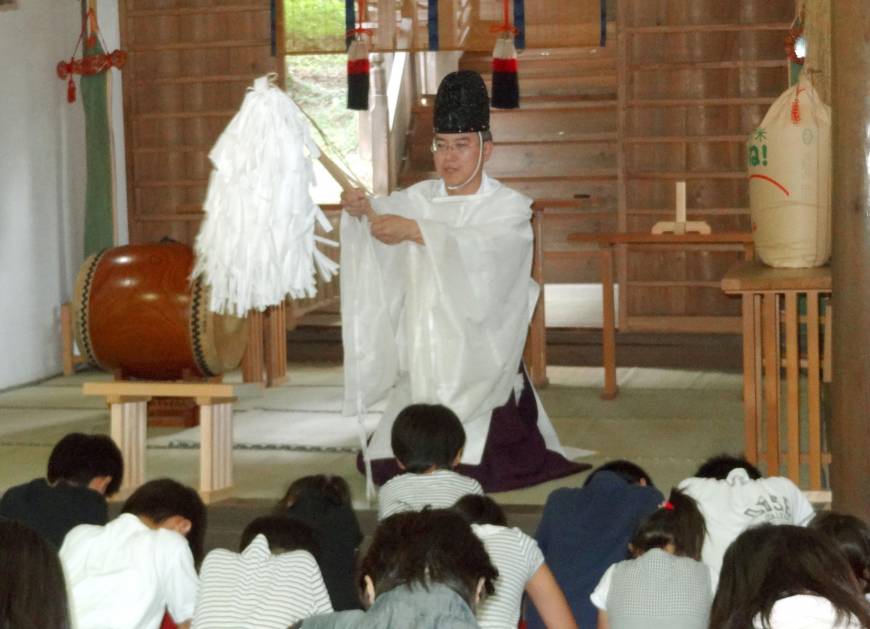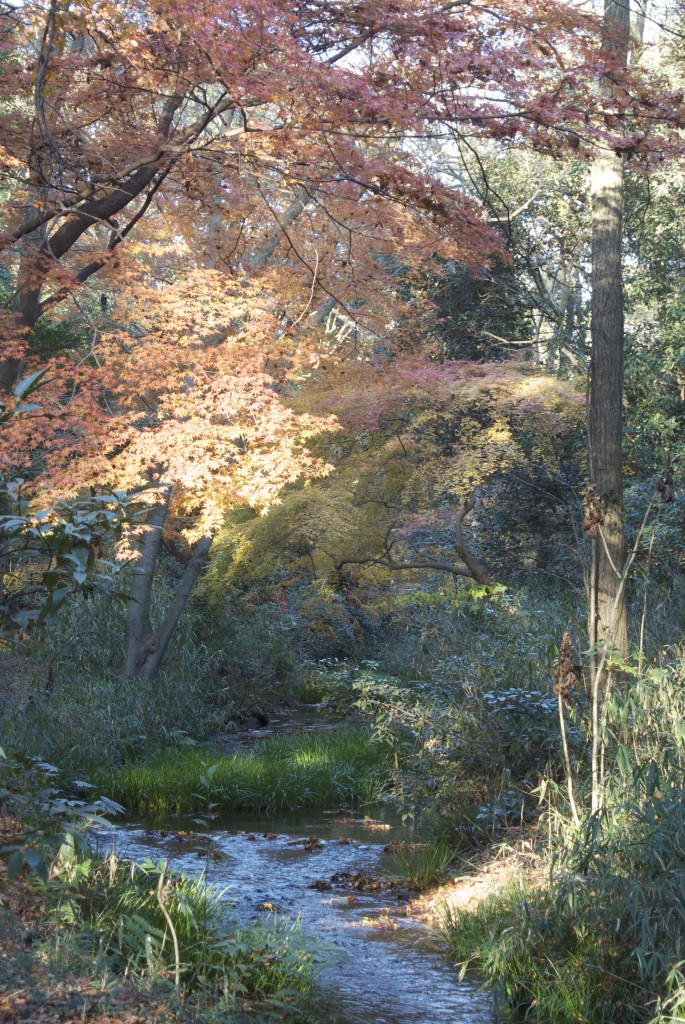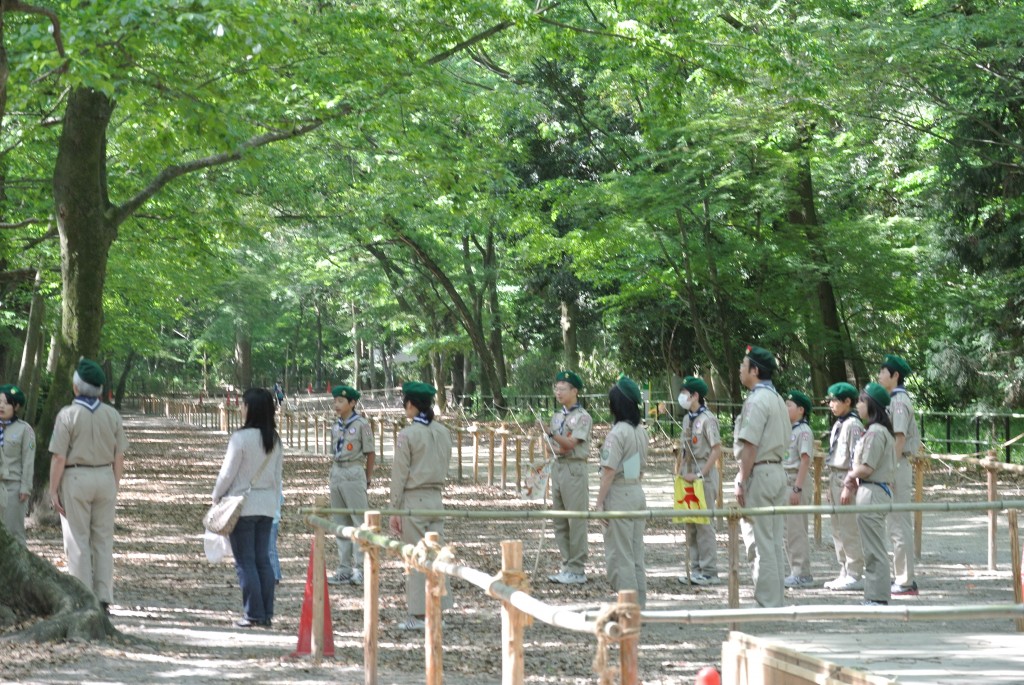Great news for all Green Shinto followers in the Japan Times today…. an example of a community activist with true environmental concerns.
*************************************************************************************************************************************************************************************
Shinto priest blazes trail as a community activist
BY TAKESHI NISHIDE KYODO OCT 23, 2013
HIGASHIHIROSHIMA, HIROSHIMA PREF. – In these challenging times, Shinto priests can’t afford to confine themselves to the quiet and peace of their shrines.

Forward-looking: Mitsunobu Okada, chief priest of Sugimori Shrine in Higashihiroshima, Hiroshima Prefecture, holds a purification ceremony attended by children on Sept. 8. | KYODO
On a Sunday afternoon in September, Mitsunobu Okada, chief priest of Sugimori Shrine in Higashihiroshima, Hiroshima Prefecture, was talking to a group of children as he led them through the forest surrounding the compound. “I hope they will become sensitive children through exposure to nature,” Okada said.
The forest stroll followed an oral recitation lesson using classic Japanese literary works that was organized by a nonprofit organization. The lesson was attended by more than 80 children and parents. The shrine’s involvement in the education of children is just one example of Okada’s efforts to strengthen local bonds as communities across the country grapple with an exodus of young people.

A shrine's surrounds can be a creative focus for the local community
Okada, 48, arrived at Sugimori Shrine in spring 2011 from Jinja Honcho in Tokyo, the administrative headquarters of an organization that presides over Shinto shrines across Japan. He was inspired to become a Shinto priest by the sight of his grandfather dedicating himself to his duties as chief priest of a shrine.
After high school, he enrolled at Kokugakuin University in Tokyo as a night student to obtain a Shinto priest qualification. During the daytime he worked at a shrine where he was a live-in student. Japan was caught up in the bubble economy of the mid-1980s. “When everyone else was enjoying an extravagant student life, I was chopping firewood for cooking,” Okada recalled. “My experience at the time made me what I am now.”
After he was graduated, Okada served briefly at a shrine in Chiba Prefecture before being employed by Jinja Honcho. After working at the national center of Shinto for 20 years, he took up a vacancy at Sugimori Shrine, where there was no permanent priest. When Okada arrived there, he was greeted with a depressing sight. The forest in the shrine precincts had not been tended and the exterior of the shrine building was not well maintained.
Immediately after introducing himself to the 550 families in the area, Okada worked to make the shrine a more pleasant place to visit, starting by trimming the thick grass. “I was starting from scratch,” he said.
The sight of the new priest working hard prompted nearby residents to help. A path through the forest was cleared and a prefabricated cabin was set up to serve as a meeting place. Katsumi Tanaka, a 55-year-old parishioner, praised Okada as a “really conscientious man.”
Okada came up with a succession of ideas to invigorate the local community, such as providing the shrine as the place for traditional seasonal customs like the “tsukimi” moon-admiring ceremony in September and the “setsubun” bean-throwing ceremony in February. “If the shrine is energized, the community will also be energized,” Okada reasoned.
Given his meager income, Okada makes ends meet by tapping into the savings he accumulated in Tokyo. “I face a lot of difficulties, but this is the life I have chosen.”
The story is similar for priests across Japan. There are around 79,000 Shinto shrines and about 22,000 priests nationwide, according to Jinja Honcho. And like the population at large, congregations are growing older and shrinking, and sources of revenue for shrines are drying up.
Okada, who has been aware of the sorry state of shrines since his days at Jinja Honcho, views his community initiative as an “experiment.” In setting an example by taking action himself, Okada said, “I want to cheer up young priests and show ‘You can do it if you try.’ “

Community involvement at Kyoto's Shimogamo Shrine

Leave a Reply